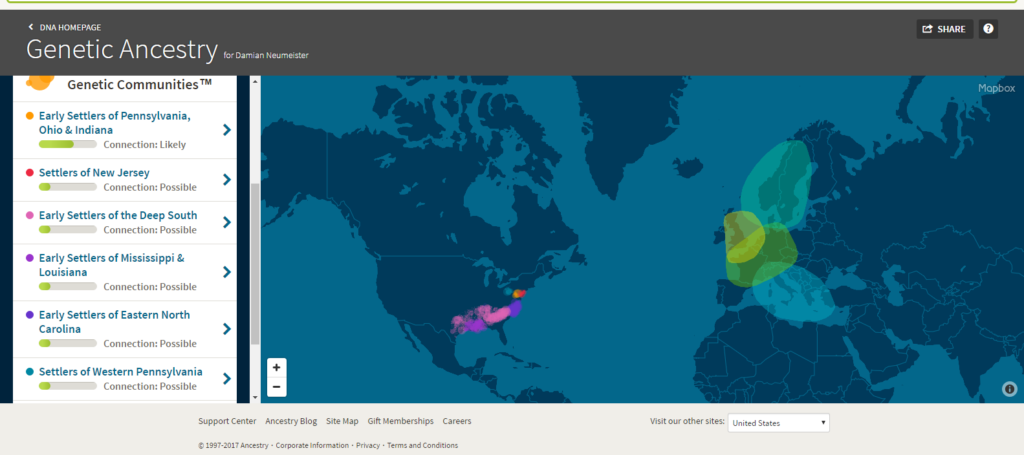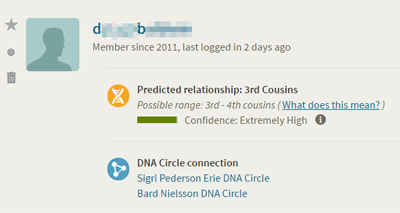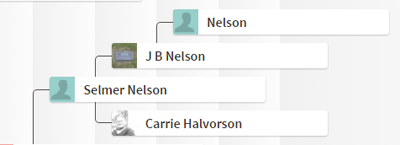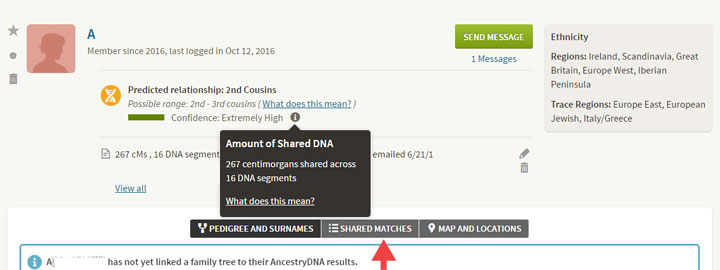With over 4 million DNA tests [as of 11 aug 2018 – 10 million], the Ancestry database has reached a tipping point where any tester with American ancestry will get some good cousin matches. How do these help prove an ancestral line? Well when your DNA matches multiple people descended from the same ancestral line, you can have some confidence in that part of your tree. Conversely, if you have no matches on a line, there may be a problem.
database has reached a tipping point where any tester with American ancestry will get some good cousin matches. How do these help prove an ancestral line? Well when your DNA matches multiple people descended from the same ancestral line, you can have some confidence in that part of your tree. Conversely, if you have no matches on a line, there may be a problem.
On your DNA home page, the center panel summarizes your match count. It shows the number of predicted 4th cousins or closer as well as the number of starred and green leaf ancestors. You can add stars to matches for whatever reason you wish. Only you and anyone you share your DNA results with can see them. Ancestry will indicate each DNA match that also has a tree match with you by using a green leaf.
will indicate each DNA match that also has a tree match with you by using a green leaf.
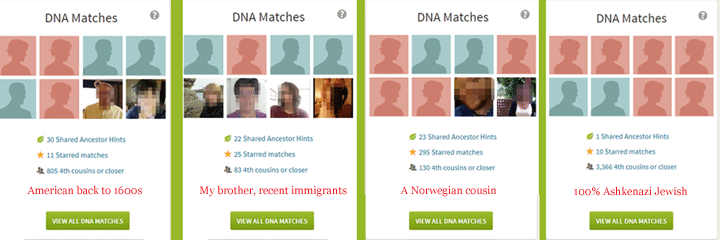
Ancestry DNA Home Page Center Panels (words in red are mine)
Notice the big difference in the number of cousins between those with 19th and 20th century immigrant ancestors like my family and those with deep American ancestry. Also foreigners like my Norwegian cousin will have very few, while Jewish testers will have incredibly high numbers due to endogamy.
DNA Matches Page
Click on the green View All DNA Matches button to get to your DNA matches page. Or click on the starred or green leaf matches to see just those matches. On your match list page, every DNA match who also has a matching ancestor to you in their tree is marked with a green leaf indicating a hint.
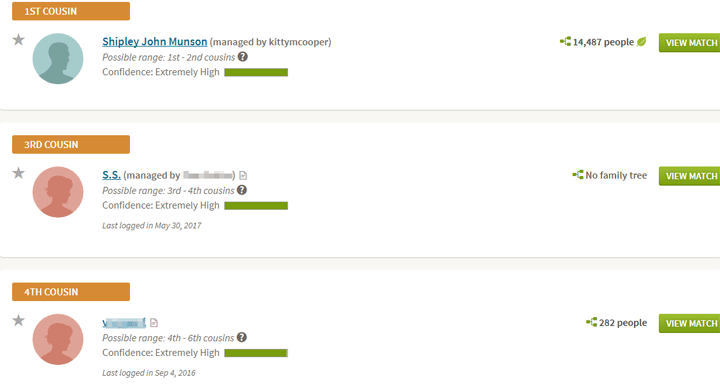
When there is a green leaf, clicking on the View Match button will take you to a page that will show you a picture of the expected relationship pathway (images of that on page 2 of this article).
Many times matches with no tree will actually have a tree that is just not connected to their DNA. You can see that on the view match page. There you can select it in the dropdown menu, as shown below, to get the usual sideways display with a surname list. Sometimes you can even figure out where they fit in from it.

I like to make Ancestry do the work of checking my assumptions by adding the tentative line to the tree connected to the DNA test. I put a “??” as the suffix when I am trying out a set of ancestors so that anyone copying my tree is warned that it is a test. Strange characters in the suffix box do not seem to affect the matching. Another perhaps better solution is to make your tree private while you experiment. Or to use a second small private tree that you connect your results to when trying out a possible ancestral line. You can change what tree and who your DNA is connected to on the DNA settings page. Get there from the button with a gear on the top right of your DNA home page.
do the work of checking my assumptions by adding the tentative line to the tree connected to the DNA test. I put a “??” as the suffix when I am trying out a set of ancestors so that anyone copying my tree is warned that it is a test. Strange characters in the suffix box do not seem to affect the matching. Another perhaps better solution is to make your tree private while you experiment. Or to use a second small private tree that you connect your results to when trying out a possible ancestral line. You can change what tree and who your DNA is connected to on the DNA settings page. Get there from the button with a gear on the top right of your DNA home page.
Here are some examples of my experiments.
Continue reading →
.




